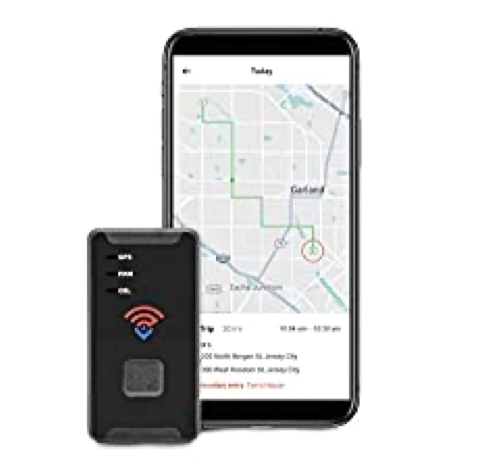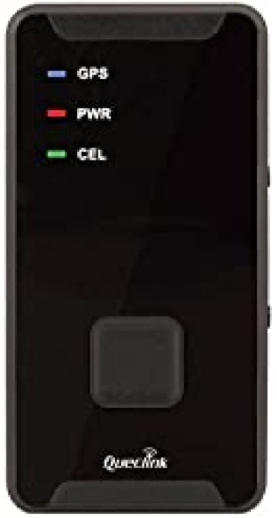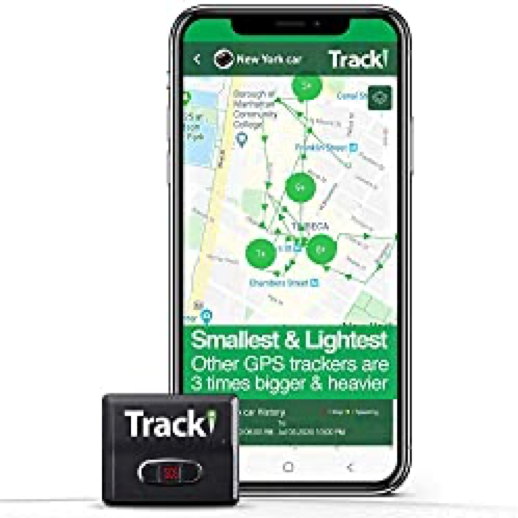Do you trust the airlines to always send your checked bags to the right place? Me, neither. Keep tabs on your stuff with one of these three trackers.

You stumble off your red-eye and find your way to baggage claim, where you watch the luggage carousal go ‘round like a giant roulette wheel, hoping you’re not one of the unlucky few. But as the torrent of bags slows to a trickle, and the carousal finally grinds to a halt, you realize your number has come up—your bag is not where it’s supposed to be. You feel frustrated, powerless, and infuriated—not the best way to start your trip.
According to the SITA 2019 baggage report, airline luggage handling is improving. Despite record passenger numbers, 2019 had the lowest level of luggage mishandling recorded, with about six bags mishandled per 1,000 passengers. That’s small consolation, though, if you own one of the six. And while most bags are eventually returned, their disappearance ruins lots of vacations, weddings, and business meetings.
I typically don’t check bags. Traveling carry-on only means I don’t have to play baggage-carousal roulette, get a jump on exploring my new destination, avoid lugging a big suitcase up the stairs of my Airbnb, and am flexible in the event of missed or cancelled flights mid-journey.
But sometimes I have no choice. My bicycle or skis won’t fit in the overhead bin or under the seat in front of me. On those occasions when I must surrender a suitcase to the system, I follow these ten tips to increase the odds the bag makes it to my final destination when I do. I also keep tabs on it throughout its journey, thanks to my luggage tracker.
A luggage trackers does what its name implies: it tracks your bag from where you drop it off to where you pick it up again. It works like the transmitter the FBI puts in the briefcase full of ransom money in action films—activate the tracker, drop it in your bag, open the mobile app, and start tracking!
Trackers communicate in various ways. Some transmit their GPS or GSM location to a server, which then sends that info via mobile app to the customer. (GPS trackers use satellite data for their location; GSM trackers use local mobile networks.) Others communicate with the customer’s phone via simple close-range radio frequencies.
Tracking via GPS or GSM requires cell service, at an additional monthly fee. None of the trackers I tested required a contract or imposed a cancellation fee, which meant I could turn them on when needed, such as for the duration of my trip.
Trackers that use radio transmitters don’t require a monthly fee. But they also can’t track your bag beyond a limited range (usually 100-200 feet).
I rely on GPS/GSM technology to track my luggage. I tried out a number of models; here are my top three picks:
Spy Tec STI GL300 ($25)

The GL300 is operated through Spy Tec’s mobile app, which is supported by Google Maps, which means detailed tracking. (I was impressed with the accuracy.) The unit weighs two ounces and is less than three inches long. Battery life is typically two weeks, thanks to motion-activation technology. The monthly fee is $25, $35, or $45, depending on how often you want location updates—sixty, ten, and five seconds, respectively. All plans support text or email notifications when the tracker moves out of range.
I had a GL300 in my surfboard bag when I checked it from Denver to Brisbane, Australia, with connections in Los Angeles and Sydney. When I arrived in Brisbane, the surfboard wasn’t there. I was able to tell QANTAS my GL300 showed the board was in Los Angeles, where I’d connected from United Airlines. The board got to me 24 hours later. I don’t know if it arrived more quickly because I knew its location, but I had peace of mind watching the delayed board fly to Sydney and then on to Brisbane, where I picked it up without waiting for a phone call from the airline.
The Spy Tec GL600 is a good choice for someone who needs GPS tracking one or two months at a time, and who plans to use the unit for years.
AmericaLoc GL300W ($106)

The AmericaLoc has its own mobile app. It can be set to deactivate while in motion, or run in a number of different modes that preserve battery life. It has a number of customizable alerts that be triggered under a variety of circumstances: motion, speeding, low battery, entering or leaving geo-fenced areas, power on/off, or just pressing the front button. Triggering alerts for exactly what you want is easy to set up. Tracking data is saved for twelve months.
Battery life depends, of course, on the way the tracker is used, and the alert modes you select. But like with the Spy Tec tracker, you can anticipate one to two weeks between each charge. The AmericaLoc GPS service is $25 per month; slightly less if you buy time in bulk. The AmericaLoc comes with two free months of service with your first purchase which effectively lowers the price by $50. Like with the Spy Tec, there’s no contract or cancellation fee.
Last winter, I made a tight connection in Paris. My AmericaLoc let me know my skis did not. The early warning allowed me to start solving the problem immediately, with the result being (thanks to a helpful Swissair employee) my skis made it to Geneva not long after I did. If I had waited to start tracking them until after I landed in Switzerland, it would have been at least a day, perhaps longer, until we were reunited. However, compared with the Spy Tec, the AmericaLoc’s location tracking wasn’t as accurate. (It had my bag at the other end of the airport from where it actually was.)
The AmericaLoc GL300W is for people who need features and power; it’s great at tracking people and vehicles as well as bags.
Tracki 2020 ($17)

Tracki 2020 is the cheapest of the bunch, both in terms of price and monthly cost. It’s also my favorite.
Like the other trackers, Tracki has a decent app, customizable alerts, including SOS panic button. Tracki has a slightly better battery life (up to a month in battery save/sleep mode whereby the device goes to sleep and wakes up every three hours, tracking location either times per day), plus an optional extended battery.
The Tracki has a number of features that make it stand out.
First, not many GPS tracking devices have integrated the use of Bluetooth, WiFi and cellular technology into real time tracking. When indoors, the Tracki relies on Wi-Fi mac ID matching to a global database. Outdoors, it uses GPS/A-GSM/GSM. And the tracker relies on Bluetooth when tracking within the last 100 feet.
Second, you can access five years of tracking history (other services usually offer only 30 to 90 days’ worth of history.)
Third, it’s smaller and lighter than other GPS trackers: 1.4 ounces and 1.8 x 1.6 x 0.7 inches, about the size of an Airpods Pro case.
Fourth, you get live phone customer service; the other trackers offered only live chat support. The tracker also takes just 3 minutes to go live after setting it up, and with an optional battery included, the tracker can last up to 6 months if it’s set to track only 3 times per day.
Fifth, the Tracki comes with a lifetime warranty, plus free replacement if it’s lost or damaged.
Sixth, the monthly service plans are reasonably-priced: $19.95, $16.60, $13.95 or $9.95 per month for unlimited usage around the world.
Seventh, and best of all as far as I’m concerned, Tracki comes with a built-in SIM and works in 185 countries, not just the USA.
Many GPS luggage trackers (including these three) can be used as personal or vehicle trackers, too. I’m known for wandering away (and getting lost) in marketplaces around the world. Earlier this year when I got turned around in a marketplace in Oman, Husband was able to find me in three minutes—he’d dropped our Tracki into my bag that morning!
The Tracki—with its small size, reasonable monthly plans, worldwide coverage, and great customer service—is a good budget choice and my pick for keeping track of checked bags.
Twist’s Take: Lost luggage is every traveler’s nightmare; a tracker is worth the peace of mind.
